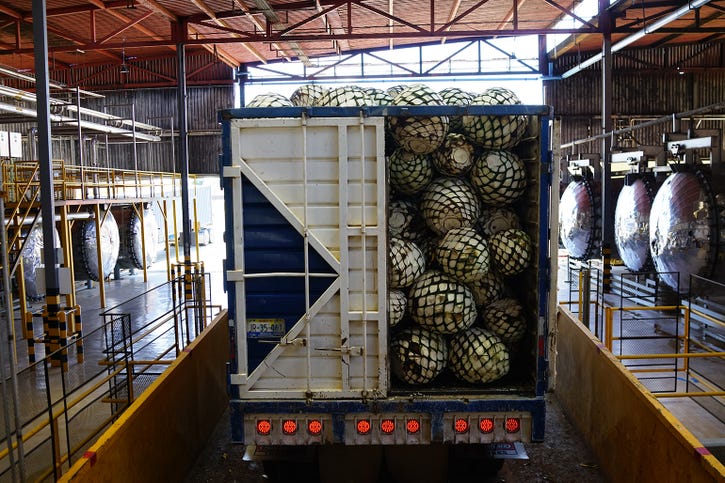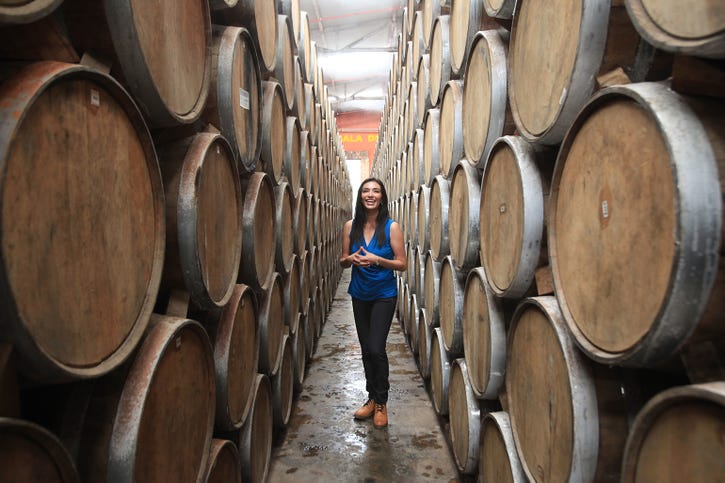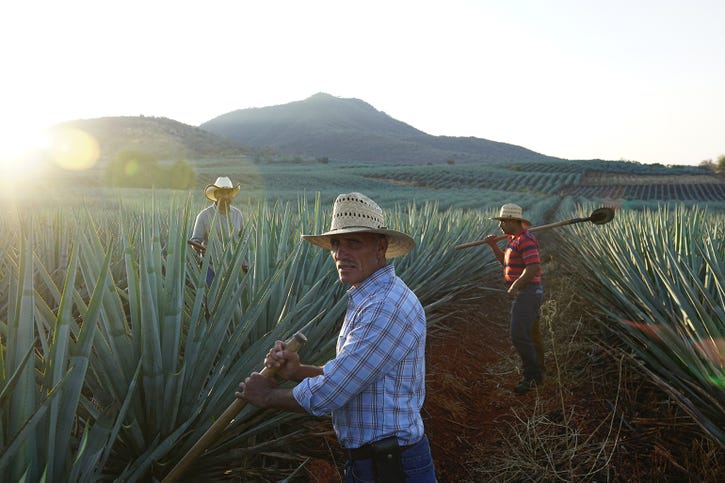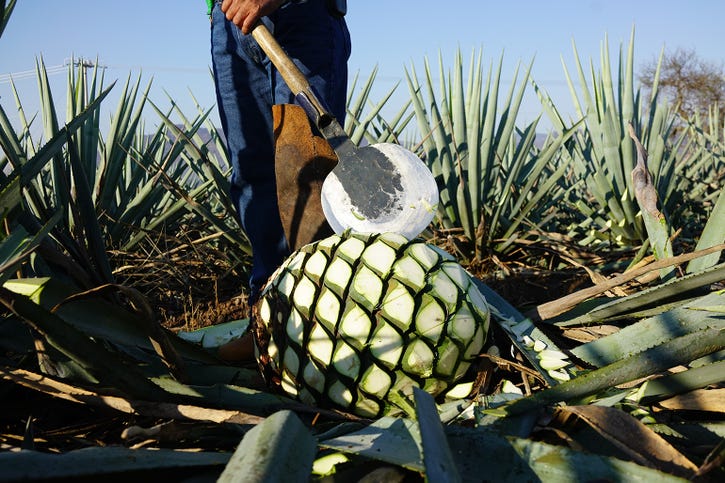Tequila Neat, Hold the Waste: A Look at One Distiller’s Zero Waste Efforts
Mexico-based distiller Tequila Cazadores creates tequila using a seven-step sustainable and zero waste production process.

As tequila continues to rise in popularity, with tequila exports to the U.S. reaching 20.4 million cases in 2018, it’s worth looking at how the libation is produced and its impact on the planet.
Tequila Cazadores was originally born in Los Altos de Jalisco, Mexico, in 1922, and the spirit was created by Don Jose Maria to share with friends and family. In 1973, Maria’s grandson, Don Felix, officially opened the first Cazadores distillery, where the tequila is created using a seven-step sustainable and zero waste production process, including double distillation, double fermentation and a careful maturation process.
Since its inception, Tequila Cazadores, which is known for using only blue agave, has always kept sustainability as a top priority. Today, the distillery houses a biomass boiler, making it 100 percent biomass fueled—60 percent of the biofuel is used to produce the tequila and comes from spent agave fibers, which equates to about 11,000 tons a year. The other 40 percent comprises roughly 8,000 tons of carbon-neutral, renewable fuel sources like clean waste wood, biomass briquettes, sawdust, coconut shells and tree cuttings.

Together, organic materials fill the biomass boiler, where they are transformed into the fuel needed to generate steam power required for the agave sugar extraction process, cooking and distillation of the brand's tequila, which continues to rely on the original recipe from 1922.
Additionally, as Cazadores is part of the Bacardi portfolio, the brand adheres to the company’s no-straw movement to reduce plastic pollution.
“As the popularity of tequila grows, it is more important than ever to implement sustainable solutions to ensure the future of the industry,” says Tania Oseguera, Tequila Cazadores master tequilier and brand ambassador. “This is why Tequila Cazadores is proud to have established a green operation from beginning to end at our award-winning distillery, which prioritizes environmental responsibility and employee safety every day.”
In order to become a master tequilier, Oseguera underwent extensive training and received official certification by the Mexican Tequila Academy. Born in Jalisco, Oseguera is passionate about the brand’s dedication to crafting a 100 percent blue weber agave tequila in the most responsible way possible, from employing local agave farmers to reducing waste during production.

This year, Tequila Cazadores received an honorable mention in the Bacardi Good Spirited awards for maintaining its zero waste-to-landfill status as it continues to reuse and recycle all the waste it produces. Additionally, the company continuously strives to improve recycling efforts every day, says Oseguera.
Agave is used to not only create the tequila but to power the distillery as well. The bagasse, or leftover agave fibers without sugar, are converted into biofuel that powers the biomass boilers used during extraction, cooking and distillation. This process has helped Tequila Cazadores reach an 80 percent reduction in greenhouse gas emissions.
The brand also uses agave sourced from local farmers, and the company treats the residual liquids from the distillation process and uses the byproduct (vinazas in Spanish) to irrigate fields.

“We reuse and recycle all of our waste,” explains Oseguera, who leads distillery tours for the company and educates groups from all over the world on all aspects of tequila. “During harvest, leaves are left behind to fertilize the soil and the best hijuelos, or offshoots, are replanted to continue to grow quality agave. After distillation, treated product waste, called vinaza, is used as an organic fertilizer for our agave fields.”
“We waste less agave. Extracting by diffuser lets us obtain 99 percent of the sugar needed from each plant, which is more than many other tequila producers can,” she adds.

In addition to Tequila Cazadores’ sustainable tequila-making process, the company’s laboratory and offices are powered by solar tubes, and moving forward, the company will begin sourcing clean energy through a wind-powered source. Currently, more than 99 percent of the distillery’s electrical needs are met through renewable energy. Oseguera also adds that the company has reduced its noise pollution by 20 percent.
Here is a closer look at some of the accolades and awards the company has received in recent years for its sustainability efforts:
In 2016, the Mario Molina Institute recognized Tequila Cazadores as one of the distilleries with the lowest carbon footprint. The Mario Molina Institute is a nonprofit that promotes sustainable development and vigorous economic development.
In 2017, the Tequila Cazadores distillery earned a PROFEPA (Mexico’s environmental protection agency) “clean industry status” certification from the Mexican government’s environment council for best-in-class legal compliance, safety and environmental practices.
In 2016, the distillery received the Sustainable Office Award from Bacardi Limited's Good Spirited Sustainability Awards. With the use of a single office, the company’s energy consumption by cooling systems was reduced by 83 percent in carbon dioxide greenhouse gas emissions.
About the Author
You May Also Like




